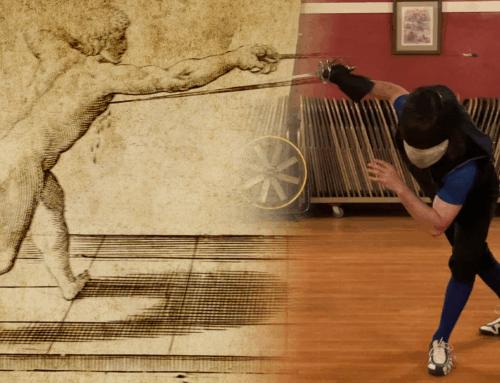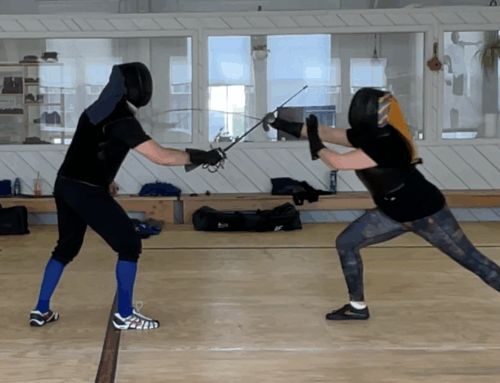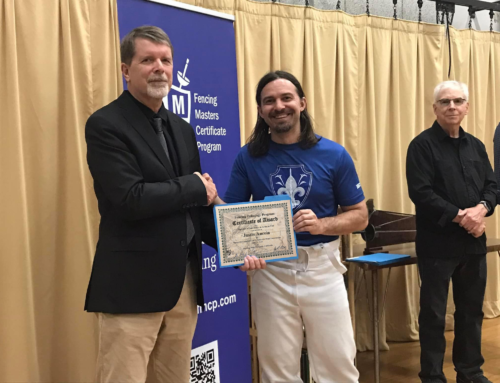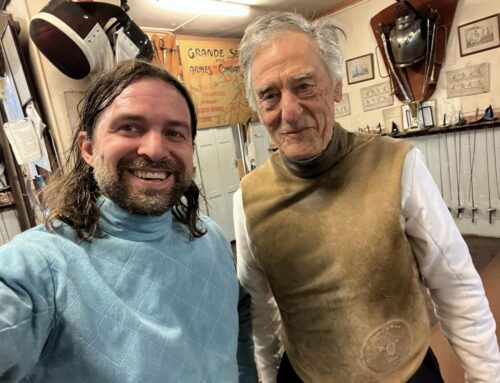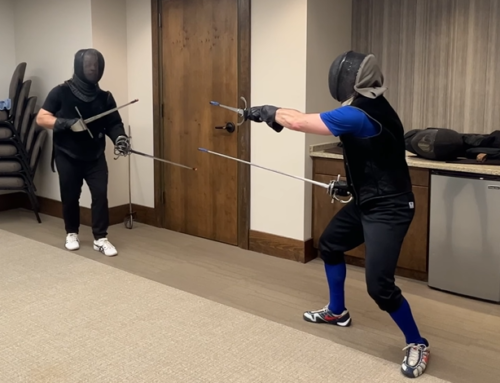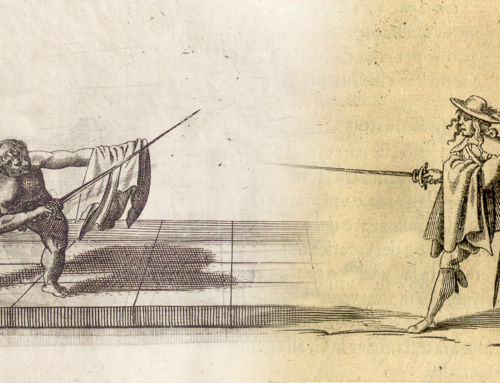Today we’ll be looking at the plays in Plate 16 of La Scherma by Francesco Ferdiando Alfieri. You can snag the Terminiello copy over on Amazon and the Tom Leoni version over on LuLu. I’m cross-referencing both in this chapter.
Chapter 16 continues attacks via body voids. Chapter 14 & 15 dealt with voids stepping toward your outside line. Chapter 16 talks about lowering the body in the void (typically toward the outside line).
These are some of my favorite voids in the Italian system.
The Plays
Alfieri doesn’t have any sassy intro to this chapter. He just jumps right into business… unlike this blog post which is starting off with sass.
He does mention (at the end of the chapter), that we need to be in misura perfetta (perfect measure) for the moves to work. If not, our opponent could get their point back on line to strike us. Misura perfetta is the distance in which you can strike your opponent without over extending yourself.
I’d like to also note that Gentleman 30 is leaning back and away from his opponent, not toward his opponent like in a firm footed lunge. This requires to be pretty close to your opponent or will require small advances while lowering yourself.
One final note before we begin. You can, as Alfieri points out, perform these attacks with a lunge or on the pass. In many instances, doing these via a pass is more ideal in the SCA environment since we can’t run our friends through… or shouldn’t run them through anyways.
Play #1. Gentleman 30 is in terza. Gentleman 31 gains Gentleman 30’s sword on the outside line in seconda. Gentleman 30 then performs a cavazione and attacks on the inside line. In that tempo, you avoid his strike by lowering your body and striking him.
This move will be easier for shorter fencers who are typically lower on their opponent’s horizon to begin with. While lowering your body, you want to be beneath their sword. This is easier done when your opponent is attacking in a high seconda (like in the illustration).
It’s important to strike them in the flank, just under their sword arm and to stay beneath and behind your guard so they can’t strike you afterward.
Play #2. In the second play Gentleman 31 finds his opponent’s sword on the outside line and feints. Gentleman 30 moves to parry the feint. Gentleman 31 performs a cavazione and strike in seconda under the sword arm.
This is another half-cavazione that Alfieri is pretty big on. You feint high and hit low on the same line. It’s a quicker move than your outside to inside (inside to outside) cavazione.
However, because the SCA plays with blunts and not sharps, the move is screwed up by distance. In these plays, it’s presumed that you’ve run your opponent through with your attacks, so you’re well passed your opponent’s point. But because we can’t do that in the SCA (thank the gods), it’s a bit more dangerous as it’s harder to get passed that tip. The moves in Chapter XIII & IX might be more practical in an SCA context.
Play #3. Alfieri starts off by saying — if you want to mix things up — you can perform a firm footed lunge along Line A in quarta to the inside line.
He then says you can feint to the inside line along Line A in quarta. As they move to parry, you strike along Line B. Again, you’ll be lowering yourself beneath their sword (presumably a higher quarta).
Because we’re aiming below their sword arm, there’s a real risk in the SCA environment that our opponent can strike us as we strike them since we can’t run them through to get safely beyond their point. I’d recommend doing this last play in two ways:
- Via a lunge, with your off-hand high and protecting your sword-side face from late attacks.
- Via a passing step so you’re beyond their point. Having the free hand high to protect your head wouldn’t be a bad thing either.






